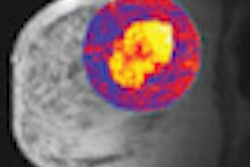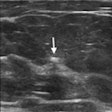Tuesday, November 30 | 3:50 p.m.-4:00 p.m. | SSJ01-06 | Room E352
MRI of ductal carcinoma in situ (DCIS) can help determine which lesions are likely to upgrade to invasive cancers, researchers from New York University Medical Center in New York City will report in this Tuesday afternoon presentation.In their retrospective review, Linda Moy, MD, and colleagues examined pure DCIS lesions detected at MRI that were subsequently sent to MRI-guided biopsy and surgical excision. Two radiologists blinded to the results reviewed the images and examined mammographic features, biopsy technique, and histology findings.
Histologic analysis of the MRI-guided core biopsies yielded 44 DCIS lesions in 42 patients (mean age, 51 years). A total of six (13.6%) were masses and 38 (86.4%) were nonmass-like enhancements (NMLE). The median lesion size was 1.3 cm.
Surgical excision resulted in nine invasive cancers (21%), all invasive ductal carcinomas (IDCs). Features more likely to be upgraded to IDC included early enhancement (8/9, 89%), lesions with a type 2 or 3 curve (9/9, 100%), and residual mass lesions (7/9, 77.8%) (p = 0.02).
For excluding the presence of invasive disease, the most predictive features were type 1 curve, residual NMLE, or no residual abnormality after percutaneous biopsy. Lesion size, internal enhancement pattern, NMLE pattern, and the presence of microcalcifications were not helpful in excluding the presence of invasion, Moy will report.
Invasive cancer was underestimated in the biopsy series by 21%, according to Moy. Contrast uptake kinetics at MRI and a residual mass lesion were associated with an upgrade to invasive cancer.



















